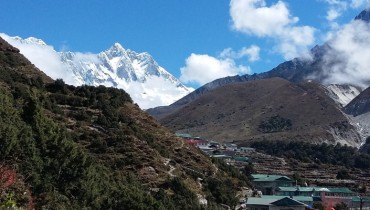Is It Possible To Do Everest Base Camp Trek in Monsoon Season?

Introduction
Embarking on a journey to the Everest Base Camp is a dream for many adventurers. With its awe-inspiring landscapes, rich cultural experiences, and the ultimate achievement of reaching the base camp of the world's highest peak, the trek is undoubtedly a bucket-list item. However, concerns arise when considering the monsoon season as the time to undertake this challenging adventure. The Himalayan region experiences heavy rainfall during the monsoon season, bringing forth a host of challenges. In this article, we will explore whether it is possible to undertake the Everest Base Camp Trek during the monsoon season and discuss the factors to consider when making this decision.
- Understanding the Monsoon Season in the Himalayas
To comprehend the feasibility of trekking to Everest Base Camp during the monsoon season, it is vital to understand the characteristics of this weather pattern. The monsoon season in the Himalayas typically spans from June to September. During this time, the region experiences heavy rainfall due to the moisture-laden winds blowing from the Bay of Bengal and the Arabian Sea. These torrential downpours can lead to landslides, swollen rivers, and unstable trail conditions, making trekking a formidable challenge.
- The Pros and Cons of Trekking in the Monsoon Season
Advantages:
Less crowded trails: The monsoon season sees fewer trekkers compared to the popular trekking seasons, such as spring and autumn. This means that you can enjoy a quieter and more serene trekking experience, with less competition for accommodation and resources.
Lush greenery and stunning landscapes: The heavy rainfall during the monsoon season rejuvenates the flora and fauna of the region, transforming the landscape into a vibrant and lush paradise. The valleys come alive with blooming flowers, and the forests become denser and greener, providing trekkers with breathtaking vistas.
Disadvantages:
Challenging weather conditions: The monsoon season brings unpredictable weather patterns, including heavy rainfall, fog, and cloud cover. Trekking in such conditions can reduce visibility, making navigation and trail identification difficult. Additionally, rain-soaked trails can become slippery and increase the risk of accidents.
Increased risk of landslides: The Himalayan region is prone to landslides during the monsoon season due to the saturated soil and steep terrain. Trekking in these conditions can pose a significant threat to safety and may require frequent trail diversions or even temporary closures.
- Safety Considerations and Precautions
Physical preparedness: Undertaking the Everest Base Camp Trek in any season requires a good level of physical fitness. However, during the monsoon season, when the trek becomes more challenging, it is crucial to ensure that you are adequately prepared. Regular exercise, cardiovascular training, and strength-building exercises are essential in the months leading up to the trek.
Expert guidance: Engaging the services of an experienced and knowledgeable trekking agency or guide becomes even more critical during the monsoon season. Their expertise and familiarity with the trail conditions can ensure your safety and provide valuable guidance when dealing with any challenges that may arise.
Equipment and gear: Investing in appropriate trekking gear and equipment is paramount for a successful monsoon trek. Waterproof and sturdy hiking boots, rain gear, a reliable backpack, and quick-drying clothing are some of the essential items to consider. It is crucial to pack light while ensuring you have all the necessary gear to tackle the wet and challenging conditions.
- Alternative Routes and Timing
Gokyo Lakes Trek: An alternative to the Everest Base Camp Trek during the monsoon season is the Gokyo Lakes Trek. This trek offers stunning views of the turquoise Gokyo Lakes, the Ngozumpa Glacier, and the panoramic vistas of the Himalayan range. It is less prone to landslides and offers a different experience from the traditional base camp route.
Autumn and Spring Treks: If the risks associated with trekking during the monsoon season seem too high, consider planning your trek during the autumn or spring seasons. These periods offer relatively stable weather conditions, clearer skies, and a greater chance of success in reaching Everest Base Camp.
Conclusion
Embarking on an Everest Base Camp Trek during the monsoon season is a decision that requires careful consideration. While the monsoon brings its fair share of challenges, it is not impossible to undertake this adventure during this time. With thorough preparation, experienced guidance, and a flexible mindset, one can overcome the obstacles and experience the unique beauty that the monsoon season offers. However, it is vital to prioritize safety and make informed decisions based on current weather conditions and expert advice. Ultimately, whether you choose to trek during the monsoon season or opt for alternative routes or seasons, the Everest Base Camp Trek promises an unforgettable journey, a test of endurance, and an opportunity to immerse yourself in the majesty of the Himalayas.
Quick Inquiry

7 Reasons To Trek On Everest Base Camp

Things to Avoid While Trekking in Nepal


